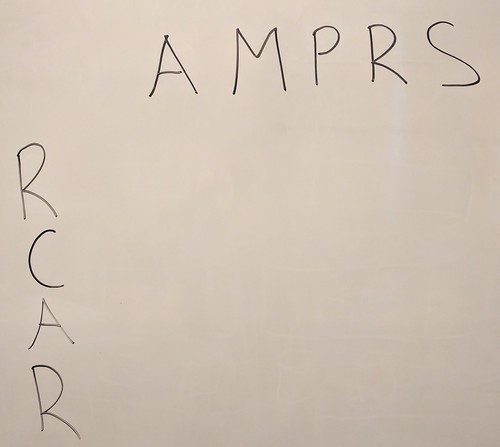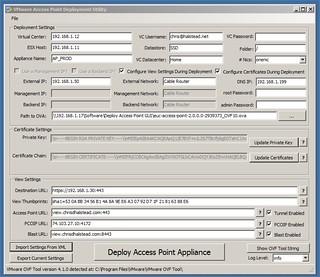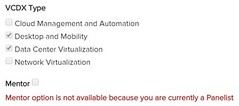Continuing on with my Common VCDX Mistakes posts I have another one for you. However, This is more an overall piece of advice.
Don’t Believe Everything You Read
Over the years I’ve seen many VCDX Defense related blog posts and tweets recommending/stating things that maybe aren’t completely accurate. Then in the coming months, we start to see these inaccurate recommendations appear in the VCDX Defenses. This can be anything from low-level configurations in the design to including a specific bullet point in the slide deck.
Just like this blog post, they are just someone’s opinions. Everything you read should be thought about before you actually act on it. If you get a recommendation to do XYZ, ask yourself, “why should I be doing this? Does it make sense?”. Don’t just blindly add it into your defence.
This also goes back to my previous post: Common VCDX Mistakes: A M P R S
Everyone is different and has their own individual ways of working with customers. Do what works for you as an architect, not what you think the panel wants to see.
As usual, these are my own thoughts, and may not be shared by other VCDX panelists. If you are interested in my thoughts, you can either subscribe to my blog or follow me on Twitter to keep an eye out for new posts.
Feel free to discuss in the comment section below.
Continuing on with my Common VCDX Mistakes posts I have another one for you.
I need you to ask yourself a question. When you are working with customers, how many times do you write the following on a whiteboard?

Read the rest of this entry »
Continuing on from yesterday’s post: Common VCDX Mistakes: A02: Enough bandwidth between Datacenters I have another common VCDX mistake for you.
What SLA?
Read the rest of this entry »
Continuing on from yesterday’s post: Common VCDX Mistakes: R01: Customer Requires N+1 I have another common VCDX mistake for you.
A02: Enough bandwidth between Datacenters
Read the rest of this entry »
Over the years as a VCDX panellist, I began seeing a pattern of regular mistakes that candidates make either in the VCDX Application process or in the actual VCDX Defense. So I have decided to write some short posts highlighting different mistakes. As usual, these are my own thoughts, and may not be shared by other VCDX panellists. If you are interested in my thoughts, you can either subscribe to my blog or follow me on Twitter to keep an eye out for new posts.
For those of you whole aren’t familiar with the VCDX program, you can read more about it here: VMware Certified Design Expert .
Today I want to kick off with the following:
R01: Customer Requires N+1
Read the rest of this entry »
I’ve been spending some time lately figuring out ways to improve the monitoring and alerting within VMware’s Internal Horizon environments. A condition I wanted to alert on was DHCP scope exhaustion. We have many DHCP scopes globally for our virtual desktop environments and I want our support team to be alerted when we start to run low on DHCP IP addresses and in a worst case scenario, exhausted all IPs in the scope. Virtual desktops without IP addresses don’t tend to work very well.
In theory, we should never exhaust our DHCP scopes if we size and place our desktop Pools correctly. However, in practice that doesn’t always happen. Often a Pools get created with the wrong amount of desktops or the wrong network was selected on the Golden Master image, causing the new Pool to use the wrong DHCP scope. I want to know when these mistakes have been made, so we can correct them before our end users are affected.
Within our Horizon environments, we utilize vRealise Log Insight for log collect and analysis. My knowledge of Log Insight is still pretty primitive, so I engaged one of my OneCloud colleagues, Caleb Stephenson, who manages our Global Log Insight instance that processes 35 Billion events per week to figure out how we can achieve this. Read the rest of this entry »
Hey, another VMworld is almost upon us, and public voting has just opened. This is your chance to make VMworld 2016 what you want it to be.
I just want to shamelessly plug two sessions that I am involved in this year, so you can all go and vote for them! Don’t forget to vote for all of the other great session that have been proposed.
#8909 Common Mistakes VCDX Candidates Make – The Panelists View
VMware Certified Design Expert (VCDX) candidates all invest a lot of time researching what they need to do to pass the VCDX certification, from preparing their submission to actually defending in front of the panel. There are great VCDX mentors in the community that can give you tips on how they passed, but rarely will you hear about mistakes candidates have made. This is your opportunity! Join two experienced VCDX panelists who have sat through countless panels, seen the mistakes that are repeated from candidate to candidate and whose insights will improve your VCDX journey.
#8648 Architecting VSAN for Horizon – the VCDX way!
Mware Horizon is a proven desktop virtualization solution that has been deployed around the world. Balancing the performance and cost of a storage solution for Horizon can be difficult and affects the overall return on investment. VMware’s Virtual Storage Area Network (VSAN) has provided architects with a new weapon in the battle for desktop virtualization. VSAN allows architects to design a low-cost high performance hybrid solution of solid state and spinning disks or all-flash for the ultimate desktop performance. VSAN now includes features such as dedupe, compression and metro clustering which provides greater options to fit your use cases. Learn from two Double VCDX’s on how to architect Horizon on a VSAN solution to provide the levels of performance your user’s need, with management simplicity that will keep your administrators happy and at a cost that will ensure your project will be a success.
 Great news guys, one of my colleagues here at VMware, Chris Halstead has written another awesome tool to assist you in deploying the newly announced Horizon Access Point.
Great news guys, one of my colleagues here at VMware, Chris Halstead has written another awesome tool to assist you in deploying the newly announced Horizon Access Point.
What is Access Point?
Access Point is a virtual appliance primarily designed to allow secure remote access to VMware end-user-computing resources from authorized users connecting from the Internet. Initially, Access Point provides this secure connectivity to desktops and applications that are either cloud-hosted through Horizon Air or on-premises in a customer data center through View in Horizon 6. Access Point is also an integral part of the forthcoming Project Enzo.
Head over to Chris Halstead’s blog to download the utility and for a great in depth user guide.
Thanks Chris, this is extremely helpful.
 For those of you who have listened to me talk at VMworld or have worked with me as Consultant or as an Architect, you’ll all know how much I bang on about the importance of a good, complete desktop assessment. Without good assessment data it very difficult to accurately identify your requirements. This can result in, and so often does, a desktop deployment that performs poorly or is vastly over sized.
For those of you who have listened to me talk at VMworld or have worked with me as Consultant or as an Architect, you’ll all know how much I bang on about the importance of a good, complete desktop assessment. Without good assessment data it very difficult to accurately identify your requirements. This can result in, and so often does, a desktop deployment that performs poorly or is vastly over sized.
On the flip side, I also understand that assessments can take a lot of time and effort if done correctly.
So VMware has teamed up with Lakeside Software to offer you a FREE, yes free, Cloud-Hosted, Self-Service SysTrack Desktop Assessment Service. This service uses the same tool that I used as a consultant within VMware Professional Services. It’s tried and tested.
Some of the highlights of the service include; Simple registration and configuration to begin data collection and Deployment Recommendations, which will help you size your Horizon environment based on the data gathered.
Give it a try, head over to: SysTrack Desktop Assessment and sign up for a free account.
 Quite regularly I get emails/DM’s from future VCDX candidates asking if I could be their VCDX Mentor. Unfortunately, because I am an active panelist this isn’t something I am permitted to do as per the VCDX Mentor Guidelines.
Quite regularly I get emails/DM’s from future VCDX candidates asking if I could be their VCDX Mentor. Unfortunately, because I am an active panelist this isn’t something I am permitted to do as per the VCDX Mentor Guidelines.
Out of the 216 certified VCDX’s worldwide, there are currently 48 VCDX’s that have indicated that would be happy to mentor future VCDX candidates via the vcdx.vmware.com website. But we need more, especially for the DTM, CMA and NV tracks.
Currently we have the following amount of mentors for each track:
- DTM – 3
- CMA – 5
- NV – 6
- DCV – 41
We really need more Mentors for DTM, CMA and NV.
As a Mentor what do you need to do? In a nutshell, provide 3-4 months of mentoring assistance for a future VCDX candidate. Here is a short list taken from the VCDX Mentor Guildlines.
- Validate they have completed the pre-requisites, this is mentoring on VCDX Defense, not necessarily for VCAP mentoring. Ultimately it’s up to you, but the intent is for VCDX Defenses.
- Help them with the overall VCDX Process
- Coach them on communication skills
- Help them develop a structured thought process
- Treat every Mentee equally
- Give honest and open feedback
- Concentrate on the mentees person and skillset
- Ask for help from the VMware Certified Design Expert Program Management if in doubt
- Help them with any presentation skills (Soft Skills)
Interested and want to become a VCDX Mentor?
- Log into the vcdx.vmware.com website
- Edit your Profile and look for the Mentor setting (I cannot check the Mentor box, but you should be able to)

You are an Expert. Give back if you can. 🙂





